Naringin
Synonym(s):4′,5,7-Trihydroxyflavanone 7-rhamnoglucoside;Naringenin 7-neohesperidoside;Naringenine-7-rhamnosidoglucoside;Naringoside
- CAS NO.:10236-47-2
- Empirical Formula: C27H32O14
- Molecular Weight: 580.53
- MDL number: MFCD00148888
- EINECS: 233-566-4
- SAFETY DATA SHEET (SDS)
- Update Date: 2024-12-18 14:15:30
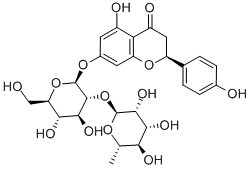
What is Naringin?
Description
Naringin is also called naringoside, hesperidin, and isohesperidin. It is a pale yellow flavanone compound extracted from immature or nearly mature outer layer of C. paradisi Macfad which belongs to Citrus grandis (L.) Osbeck. It tastes bitter and is naturally existed in the skin and flesh of Rutaceae like grapefruit, mandarin orange, and orange. It is also one of the active ingredients in many traditional Chinese medi cines like Rhizoma Drynariae, Immature Bitter Orange, Fructus Aurantii, and Exocarpium Citri Grandis. The contents of naringin in different plants vary greatly with the category and origin, and the content of naringin is high in immature fruits . In terms of traditional Chinese medicine, the flavor of grapefruit is sweet and sour, and the nature is cold; the flavors of its peel are sweet, pungent, and bitter, and the nature of its peel is warm. Both the pulp and the peel of grapefruit have the bio logical function including reducing phlegm, helping digestion, relieving abdominal distention, and fast diaphragm. And they are mainly used for the treatment of cough with asthma, sense of suppression in the chest, coldness and pain in abdomen, dys peptic retention, and hernia.
Chemical properties
beige to yellowish powder
Physical properties
Appearance: white to light yellow crystalline powder. Solubility: soluble in metha nol, ethanol, acetone, acetic acid, dilute alkali solution, and hot water and insoluble in nonpolar solvent like petroleum benzin, ether, benzene, and chloroform. Melting
History
Naringin is mainly existed in the peel of grapefruit, lime, and their varieties; it has multiple biological activities and is widely applied in the fields of medicine, food, and cosmetics. In the 1930s, Harvey and Rygg obtained naringin through the method of isolation and extraction. They also established a colorimetric method for the determination of naringin, which laid the foundation for the following researches . Booth and other researchers conducted the systematic researches on the narin gin metabolites . In the 1960s, Hagen and other researchers established a fluores cence chromatography method for the determination naringin . In addition, the biological activity of naringin was evaluated. It was observed to improve ascites, experimental pulmonary edema, peritonitis, and oxygenation . At present, the extraction methods of naringin are hot water extraction, alkali extraction, and acid precipitation and organic solvent extraction. A series of pharmacological activity studies have been conducted and demonstrated its various biological activities .
The Uses of Naringin
Naringoside is a metabolite of Naringin (N378980), a major flavonoid found in grapefruit juice. It has antioxidant, lipid lowering, and anticancer activities. It is also an inhibitor of cytochrome P450 enzymes, affecting drug metabolism and thus drug absorption in humans.
The Uses of Naringin
antihaemorrhagic, antiinflammatory
The Uses of Naringin
Naringin has been used:
- as a bitter tastant to compare the behavioral response of the Drosophila larva and adult(2)
- to study its anti-inflammatory property and to determine its effect on nucleus pulposus (NP) cells(3)
- to determine its effect on bone metabolism like osteogenic differentiation, inhibition of osteoclast formation(4)
What are the applications of Application
Naringin is a citrus bioflavonoid reported to inhibit cytochrom P450 monooxygenase activity
Definition
ChEBI: A disaccharide derivative that is (S)-naringenin substituted by a 2-O-(alpha-L-rhamnopyranosyl)-beta-D-glucopyranosyl moiety at position 7 via a glycosi ic linkage.
General Description
This substance is a primary reference substance with assigned absolute purity (considering chromatographic purity, water, residual solvents, inorganic impurities). The exact value can be found on the certificate. Produced by PhytoLab GmbH & Co. KG
Flammability and Explosibility
Not classified
Biochem/physiol Actions
Naringin, a flavanoid in grapefruit and other citrus fruits, potently inhibits intestinal organic anion-transporting polypeptide 1A2 (OATP1A2). Grapefruit juice thereby reduces bioavailability of many pharmacological agents taken at the same time.
Pharmacology
Analgesic and Anti-inflammatory Effects
The writhing times of mice were found to be significantly reduced after intragastric
administration of naringin at the dose of 60, 120, and 180 mg/kg. The swelling
degree of ear was inhibited after intragastric administration of naringin at the dose
of 120, 180, and 240 mg/kg. The peritoneal exudate was significantly reduced after
intragastric administration of naringin at the dose of 120, 180, and 240 mg/kg. The
inflammatory swelling caused by rat paw injection of protein was inhibited after
intragastric administration of naringin at the dose of 60, 120, and 180 mg/kg/day for
consecutive 3 days, and the anti-inflammatory mechanism may be related to the
inhibitory effects on the process of synthesizing or releasing of inflammatory medi ators PGE2
Anti-apoptosis, Anti-radiation, and Cancer Prevention
Naringin was found to inhibit the liver damage caused by TNF releasing induced by
lipopolysaccharide, which may be used to reduce the damage to liver and the inci dence of liver cancer . The anticancer effect of naringin was a comprehensive
result caused by many physiological activities, including the effect of antioxidantand anti-free radicals, inhibiting the proliferation of cancer cells, inducing the apop tosis of tumor cells, and inhibiting the expression of cancer gene, among which
inducing tumor cell apoptosis was an important way of naringin to prevent cancer
Protective Effects on Early Diabetes and Complications
Naringin was reported to promote the decomposition of sugar in the liver and
decrease glycogen concentration by inhibiting the apoptosis of pancreatic B cells
caused by oxidation and regulating the expressing and activity of fatty acid, choles terol, and glucose metabolism enzyme .
Naringin is the important component of traditional Chinese medicine drynaria
rhizome. Experiment results have proved that naringin can inhibit many kinds of
inflammation effects including osteoarthritis. Besides, naringin was found to have
the effects of promoting osteoblast proliferation and differentiation as well as inhib iting the activity of osteoclast
Clinical Use
It was used for the treatment of bacterial infection, calm, and cancer prevention
Purification Methods
This bitter principle from grape juice crystallises from water to give the hydrate with 6-8 H2O which when dried at 110o gives the dihydrate. Its solubility in H2O is 0.1% at 40o and 10% at 75o. The 2,4-dinitrophenylhydrazone crystallises from aqueous dioxane with m 246-247o [Douglass et al. J Am Chem Soc 73 4023 1951]. [Pulley & von Loesecke J Am Chem Soc 61 175 1939, Beilstein 18 III/IV 2637, 18 V 528.]
Properties of Naringin
| Melting point: | 166 °C |
| Boiling point: | 559.35°C (rough estimate) |
| alpha | -91 º (c=1, C2H5OH) |
| Density | 1.3285 (rough estimate) |
| vapor pressure | 2.25Pa at 20℃ |
| FEMA | 2769 | NARINGEN EXTRACT (CITRUS PARADISI MACF.) |
| refractive index | -84 ° (C=2, EtOH) |
| storage temp. | 2-8°C |
| solubility | DMSO : 1 mg/mL (1.72 mM; Need ultrasonic)H2O : 1 mg/mL (1.72 mM; ultrasonic and warming and heat to 80°C) |
| form | crystalline |
| pka | 7.17±0.40(Predicted) |
| color | off-white |
| optical activity | [α]20/D 80±10°, c = 1% in ethanol |
| Water Solubility | Soluble in water, alcohol, acetone and warm acetic acid. |
| Merck | 14,6425 |
| BRN | 102012 |
| CAS DataBase Reference | 10236-47-2(CAS DataBase Reference) |
| EPA Substance Registry System | 4H-1-Benzopyran-4-one, 7-[[2-O-(6-deoxy-.alpha.-L-mannopyranosyl)-.beta.-D-glucopyranosyl]oxy]-2,3-dihydro-5-hydroxy-2-(4-hydroxyphenyl)-, (2S)- (10236-47-2) |
Safety information for Naringin
| Signal word | Warning |
| Pictogram(s) |
 Exclamation Mark Irritant GHS07 |
| GHS Hazard Statements |
H302:Acute toxicity,oral |
Computed Descriptors for Naringin
Naringin manufacturer
New Products
(S)-3-Aminobutanenitrile hydrochloride 4-Methylphenylacetic acid N-Boc-D-alaninol N-BOC-D/L-ALANINOL Tert-butyl bis(2-chloroethyl)carbamate 3-Morpholino-1-(4-nitrophenyl)-5,6-dihydropyridin- 2(1H)-one Furan-2,5-Dicarboxylic Acid Tropic acid 1-Bromo-3,5-Di-Tert-Butylbenzene S-2-CHLORO PROPIONIC ACID ETHYL ISOCYANOACETATE 2-Bromo-1,3-Bis(Dimethylamino)Trimethinium Hexafluorophosphate 4-IODO BENZOIC ACID 3-NITRO-2-METHYL ANILINE 1-(2,4-DICHLOROPHENYL) ETHANAMINE (2-Hydroxyphenyl)acetonitrile 4-Bromopyrazole 2-(Cyanocyclohexyl)acetic acid 4-methoxy-3,5-dinitropyridine 1-(4-(aminomethyl)benzyl)urea hydrochloride 2-aminopropyl benzoate hydrochloride diethyl 2-(2-((tertbutoxycarbonyl)amino) ethyl)malonate tert-butyl 4- (ureidomethyl)benzylcarbamate Ethyl-2-chloro((4-methoxyphenyl)hydrazono)acetateRelated products of tetrahydrofuran
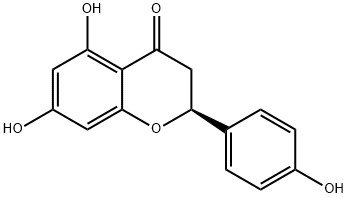

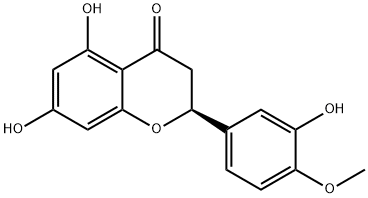
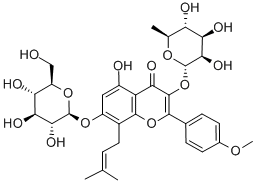
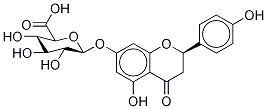
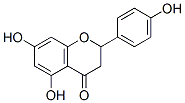
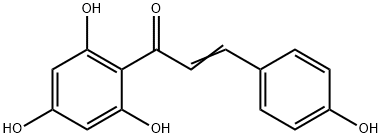

You may like
-
 Naringin hydrate CAS 10236-47-2View Details
Naringin hydrate CAS 10236-47-2View Details
10236-47-2 -
 Naringin CAS 10236-47-2View Details
Naringin CAS 10236-47-2View Details
10236-47-2 -
 Naringin 98% (HPLC) CAS 10236-47-2View Details
Naringin 98% (HPLC) CAS 10236-47-2View Details
10236-47-2 -
 Naringin 99% (HPLC) CAS 10236-47-2View Details
Naringin 99% (HPLC) CAS 10236-47-2View Details
10236-47-2 -
 Naringin 95.00% CAS 10236-47-2View Details
Naringin 95.00% CAS 10236-47-2View Details
10236-47-2 -
 Naringin, 95% CAS 10236-47-2View Details
Naringin, 95% CAS 10236-47-2View Details
10236-47-2 -
 Naringin CAS 10236-47-2View Details
Naringin CAS 10236-47-2View Details
10236-47-2 -
 Naringin CAS 10236-47-2View Details
Naringin CAS 10236-47-2View Details
10236-47-2